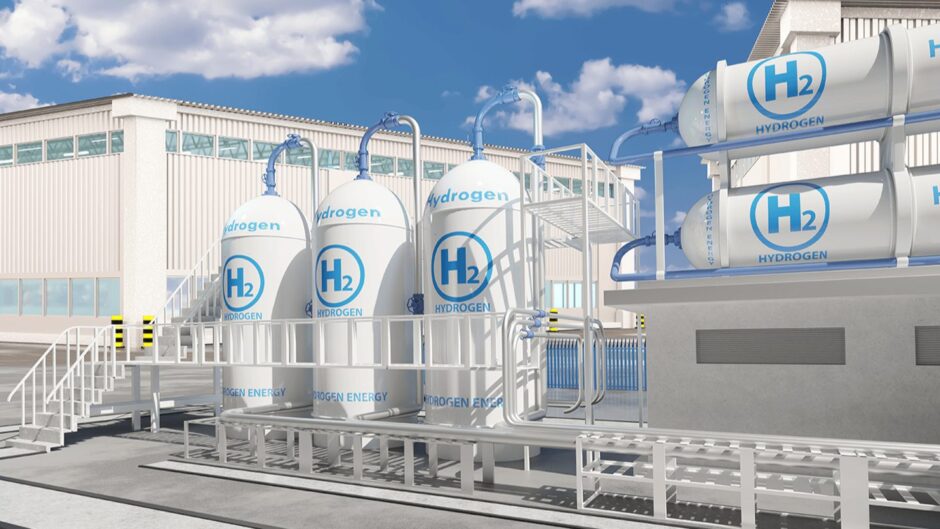
We have seen the quick action of this new ‘mission-led’ Labour government consenting large-scale solar and supporting onshore wind in its initial weeks, driving the ‘Clean Power’ by 2030 agenda, but there are crucial areas that have not seen the same level of impetus.
The North Sea will be with us for decades to come, and there is a commitment from government to manage the basin. We are awaiting plans to create jobs, not cut them, and deliver energy security – not undermine it by increasing LNG imports.
A failure to implement an orderly transition in the North Sea would jeopardise thousands of livelihoods and threaten to strand communities. Our infrastructure will continue to play a crucial role in supporting the basin as it moves towards a low-carbon future. However, this transition requires clarity on the production profiles of gas from the North Sea basin to ensure the UK produces the gas it will need for the coming decades.
Natural gas has already played a fundamental role in the energy transition by displacing coal in power generation, significantly reducing emissions. North Sea natural gas heats 80% of UK homes and generates 30% of UK electricity. It will continue to be critical in the scale-up of renewables by providing a strategic reserve that can balance the intermittency of wind and solar power.
As the feedstock for blue hydrogen, natural gas will also underpin the development of low-carbon hydrogen at scale, which will be crucial in the decarbonisation of the UK’s industrial heartlands where hard-to-abate sectors cannot depend on renewables alone.
Current UK gas production is less than 50% of UK gas demand, and falling. Domestically produced gas is vital for the UK’s energy security and has a significantly lower-carbon intensity than imported LNG.
By reducing reliance on imported energy, we can ensure a more stable and resilient energy supply. This not only protects the UK from global market fluctuations and geopolitical tensions but also supports local economies and job creation. Investing in domestic gas production and infrastructure is a strategic move to safeguard the nation’s energy future.
Key to decarbonisation
At Kellas Midstream, we are at the forefront of this transition. While today we operate infrastructure that transports 40% of UK gas onshore, we see this as the key to unlocking decarbonisation for industry through cost-effective, scalable CCUS-derived hydrogen.
Our H2NorthEast project delivered in partnership with SSE Thermal aims to contribute up to 10% of the UK’s 10GW hydrogen production targets by 2030. However, for projects like ours to succeed and for the UK to meet its ambitious net zero targets, we need clarity on the role of blue hydrogen in our energy mix.
Blue hydrogen, produced using natural gas with carbon capture and storage (CCS), offers a pragmatic and cost-effective pathway to decarbonisation. Unlike green hydrogen, which is today at small scale along with relying on renewable energy sources and grid constraints, blue hydrogen can leverage existing infrastructure, making it a more immediate and scalable solution for industrial players who are planning their transition pathways today.
Industries need certainty that their assets won’t be stranded in the future without feedstock, otherwise they may relocate overseas losing jobs and economic output. We recognise that green hydrogen is the future, but equally that the Climate Change Committee sees CCS as being a necessity, along with low-carbon hydrogen to accelerate the transition and allow green production to scale.
The H2NorthEast project exemplifies the potential benefits of blue hydrogen. Located in the Tees Valley, this project will not only contribute to the UK’s hydrogen capacity but also drive industrial decarbonisation. By replacing natural gas with low-carbon hydrogen, we can significantly reduce emissions from energy-intensive industries.
A clear roadmap
Government has a unique opportunity to provide the clarity and support that the blue hydrogen sector needs as part of its mission-led focus on climate action. We await further updates on the expansion of the CCS clusters to enable low-carbon hydrogen to move forward at pace, unlocking major investment across the UK, protecting and creating good jobs in our industrial heartlands.
Decisions need to be taken. Delaying the Track 1 clusters will have ramifications that will delay some projects and threaten the future of others. We urge government to outline a clear roadmap for blue hydrogen, including specific targets and timelines along with funding envelopes.
Kellas Midstream is looking to sanction over £2 billion of investment in the H2NorthEast project. This investment will support the development of a 1GW low-carbon, CCUS-enabled blue hydrogen production facility. However, a stable and supportive policy environment is necessary to attract the capital needed to make Britain a clean energy super power.
As we look to the future, it is clear that hydrogen will play a key role in the UK’s clean energy landscape. But it remains to be seen how significant its contribution will be, and where these molecules will come from. The H2NorthEast project is testament to the potential of blue hydrogen to drive homegrown industrial decarbonisation and economic growth.
The upcoming Labour Party Conference is a critical moment for the UK’s energy sector. It is an opportunity to set a clear and ambitious agenda for blue hydrogen, ensuring that projects like H2NorthEast can deliver on their promise of a low-carbon, economically vibrant future.
Nathan Morgan is the CEO of Kellas Midstream, a leading midstream company in the UK energy sector, committed to driving the transition to a low-carbon future through innovative projects like H2NorthEast.
